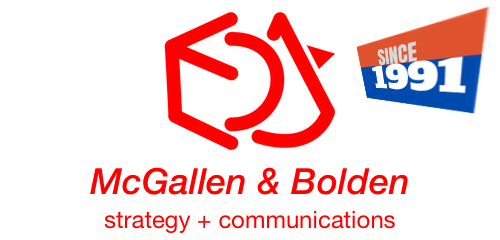In brief…
- From using “Xerox” for photocopying of documents, to saying “Fedex” for sending parcels, or “Coke” to mean soda (instead of say Pepsi or anything else), to “Google” to mean web searches (even if there is Bing, Baidu or Yandex), or “Bitcoin” to mean any variety of cryptocurrencies – people tend to converge over time to use a prominent brand to denote certain categories of products.
- Whether you represent a basic necessity, or an aspirational product, or a niche solution to fill gaps that customers may need and yet not know, you need to fill needs, even if the needs can be mental, spiritual, and not just physical.
- Jobs killed most of the legacy products and focused on the iMac and then the iBook, the iconic translucent and colorful Macs that resuscitated Apple and gave it the momentum to become what it is today.
Recently, a renowned scientist commended on LinkedIn on issues of employee retention, and that she used the word “Zoom” exclusively for videoconferencing in her post.
That is the power of a brand. From using “Xerox” for photocopying of documents, to saying “Fedex” for sending parcels, or “Coke” to mean soda (instead of say Pepsi or anything else), to “Google” to mean web searches (even if there is Bing, Baidu or Yandex), or “Bitcoin” to mean any variety of cryptocurrencies – people tend to converge over time to use a prominent brand to denote certain categories of products.
This is what linguists term as an “eponym”, when proprietary names of entities (including persons) become commonly used words.
And the strange thing is, these eponyms do not necessarily mean these brands are currently leaders, even if they once were. They have become in a sense, heritage brands depending on what period of time they occupied, from decades for legacy brands, to even months for digital brands.
For Zoom, its meteoric rise was specifically due to COVID-19 when suddenly droves of people turned to it for getting “face time” with peers, bosses, students, or families. It is also strange that Zoom took centerstage when it was not an incumbent nor a first mover, compared to older digital “legacy” brands such as Skype, or even Facebook Messenger, especially for smaller groups.
While there isn’t a formula to get from zero to household name, there are some time-proven, field-tested strategies and steps.
1. Fill specific needs
Whether you represent a basic necessity, or an aspirational product, or a niche solution to fill gaps that customers may need and yet not know, you need to fill needs, even if the needs can be mental, spiritual, and not just physical.
In a world where practically everything has been invented, and sitting in your locked down quarters with no view and little outside contact, it will be tough to expect you to suddenly get creative. So, from what you offer, distill the needs for your prospects and customers. What do they need now? What do you offer? How do you communicate what you offer matches their needs? It is often about BOTH bridging needs as well as communicating well.
For example, distill down what your products and solutions fulfill for your customers’ physiological, safety, social, self-esteem, and self-actualization needs. And for psychological needs, think how to communicate your offerings can provide in terms of assurance, intimacy, growth, and self-worth.
To someone who is looking to fill basic needs, your products need to demonstrate value, features, immediacy, and reliability.
To someone who is looking to fill a niche need, your products need to be customizable, scalable, agile, iterative, and demonstrate strong support.
To someone who is looking to fill an aspirational need, your products need to exude exclusivity and uniqueness, come with complete customization and personalization, plus a high service value and quality that they cannot find elsewhere.
2. Reach locally and beyond
No product sells by itself, not even Apple.
I know, I have been there. In the 1980s I was a local pioneer publishing evangelist for Apple’s Mac. It was a hard sell for a range of proprietary hardware that were also incredibly expensive against the PCs and PC-compatibles. Try selling a 9-inch monochrome Mac with proprietary peripherals and no hard disk, against PC-compatibles that had color monitors and internal storage, and ran office productivity and accounting software the world used. Selling Apple was hard work, but we pushed passionately because we BELIEVED. It was a cult of proprietary technology, and we were the clergy to evangelize the WHY to would-be adopters.
When the late Steve Jobs took back the reins of Apple and launched the iMac and iBook, and later the iPhone, he had the media do his magic. It was 1998, and Apple prior to Jobs’ return had a complicated product range. Jobs killed most of the legacy products and focused on the iMac and then the iBook, the iconic translucent and colorful Macs that resuscitated Apple and gave it the momentum to become what it is today. And he used a broad range of clever global marketing campaigns that played up the cheeky and defiant use of colorful and unique materials compared to the drab gray PCs out there. It worked.
Video: Launch of iMac in 1998
And when sales of Macs plateaued in the 2000s, Apple launched the “Hello I am a Mac” global campaign, using the analogy of a gray suited man to represent the PC user and a preppy smiling man to represent the upbeat Mac user. That again propped up the sales.
So, whatever your brand may be, never forget going hyperlocal, especially now in the COVID-19 world, where many locales are locked down or still have onerous restrictions. Go local, target local prospects and customers through online, and personal (through phone calls, messaging and social). And if you are doing regional or global business, don’t forget to continue to advertise. This is the best time to advertise as your competition may slow down and you end up becoming the forerunner with awareness.
And just as Jobs knew how to engage and excite the people through the media, leverage the power of public relations (PR) to your advantage. Get your PR agency to keep your brand value out there. Remember, PR is a sustained long-term program, not a once-off. Keep going.
3. Build your voice
The COVID-19 saga has created a new paradigm where it is important to have your voice.
Social media is useful, but it is not quite totally in your control. Things can happen, and rules keep changing on social media. Do keep a presence on social media, but don’t get hijacked by social media platforms. Remember to continue to build your own content and own your platforms too, and that means keeping your website and blog alive. It needs consistent and relevant content. That will be your own media, your own platform, your own voice. You own it.
The best way to do this is to engage a content marketing or digital agency which understands the value of public relations (PR), and know how to develop hybrid content that provides editorial-centric content with intelligent and subtle CTAs (call to action) for your marketing. For the best content, a good agency will ask you questions for each blog content, and you provide all the technical or background content, and your agency will spruce the raw content up to editorial standards, and either you or your agency can publish the finished content on your website and blog. The blog site should be part of your main corporate site so that you can increase your domain authority (DA) over time.
The content type can be written, or specific content can be converted to explainer videos, where parts of textual content converted into voice, through text-to-speech (TTS) tools. These animated videos with voice can be posted on social media channels such as YouTube, Facebook, Instagram, and embedded in your own website. COVID-19 has erased the chance to do outdoor videography, so use animations, photo slides, or stock footage to create your videos for now. A good message will work in whatever form. If you have passionate and eloquent employees, you can also get them to do simple livestream or on-demand videos. The important thing about social video content is about AUTHENTICITY, and not glitzy productions.
Crises happen, and we can never predict them. However, our brands and businesses, which we have slaved so much for, deserve a fighting chance. You are empowered to do some things to move forward to stay viable.

Dr Seamus Phan – Global C-suite Publicist & Strategist (Biochemist, Cybersecurity & Webdev pioneer, Author, Journalist) with 37 years of professional field experience.

